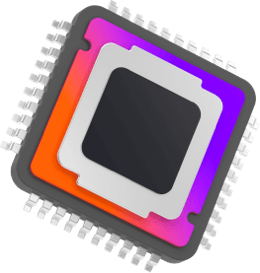| Apple M1 Pro (8-CPU) | Apple M1 Pro (10-CPU 16-GPU) | |
| 30 W | Max TDP | 30 W |
| NA | Power consumption per day (kWh) | NA |
| NA | Running cost per day | NA |
| NA | Power consumption per year (kWh) | NA |
| NA | Running cost per year | NA |
Apple M1 Pro (8-CPU) vs Apple M1 Pro (10-CPU 16-GPU)

The Apple M1 Pro (8-CPU) operates with 8 cores and 8 CPU threads. It run at 3.20 GHz base 2.06 GHz all cores while the TDP is set at 30 W.The processor is attached to the N/A CPU socket. This version includes -- of L3 cache on one chip, supports 2 memory channels to support LPDDR5-6400 RAM and features PCIe Gen lanes. Tjunction keeps below -- degrees C. In particular, M1 Architecture is enhanced with 5 nm technology and supports Apple Virtualization Framework. The product was launched on Q3/2021

The Apple M1 Pro (10-CPU 16-GPU) operates with 10 cores and 8 CPU threads. It run at 3.20 GHz base 2.06 GHz all cores while the TDP is set at 30 W.The processor is attached to the N/A CPU socket. This version includes -- of L3 cache on one chip, supports 2 memory channels to support LPDDR5-6400 RAM and features PCIe Gen lanes. Tjunction keeps below -- degrees C. In particular, M1 Architecture is enhanced with 5 nm technology and supports Apple Virtualization Framework. The product was launched on Q3/2021
Apple M1 Pro (8-CPU)
Apple M1 Pro (10-CPU 16-GPU)
Compare Detail
| 3.20 GHz | Frequency | 3.20 GHz |
| 8 | Cores | 10 |
| 3.20 GHz | Turbo (1 Core) | 3.20 GHz |
| 2.06 GHz | Turbo (All Cores) | 2.06 GHz |
| Hyperthreading | No | |
| Overclocking | No |
|
| hybrid (big.LITTLE) | Core Architecture | hybrid (big.LITTLE) |
| Apple M1 Pro (14 Core) | GPU | Apple M1 Pro (16 Core) |
| No turbo | GPU (Turbo) | No turbo |
| 5 nm | Technology | 5 nm |
| No turbo | GPU (Turbo) | No turbo |
| DirectX Version | ||
| 3 | Max. displays | 3 |
| LPDDR5-6400 | Memory | LPDDR5-6400 |
| 2 | Memory channels | 2 |
| Max memory | ||
| ECC | No |
|
| 24.00 MB | L2 Cache | 28.00 MB |
| -- | L3 Cache | -- |
| PCIe version | ||
| PCIe lanes | ||
| 5 nm | Technology | 5 nm |
| N/A | Socket | N/A |
| 30 W | TDP | 30 W |
| Apple Virtualization Framework | Virtualization | Apple Virtualization Framework |
| Q3/2021 | Release date | Q3/2021 |
Cinebench R23 (Single-Core)
Cinebench R23 is the successor of Cinebench R20 and is also based on the Cinema 4 Suite. Cinema 4 is a worldwide used software to create 3D forms. The single-core test only uses one CPU core, the amount of cores or hyperthreading ability doesn't count.
Cinebench R23 (Multi-Core)
Cinebench R23 is the successor of Cinebench R20 and is also based on the Cinema 4 Suite. Cinema 4 is a worldwide used software to create 3D forms. The multi-core test involves all CPU cores and taks a big advantage of hyperthreading.
Geekbench 5, 64bit (Single-Core)
Geekbench 5 is a cross plattform benchmark that heavily uses the systems memory. A fast memory will push the result a lot. The single-core test only uses one CPU core, the amount of cores or hyperthreading ability doesn't count.
Geekbench 5, 64bit (Multi-Core)
Geekbench 5 is a cross plattform benchmark that heavily uses the systems memory. A fast memory will push the result a lot. The multi-core test involves all CPU cores and taks a big advantage of hyperthreading.
iGPU - FP32 Performance (Single-precision GFLOPS)
The theoretical computing performance of the internal graphics unit of the processor with simple accuracy (32 bit) in GFLOPS. GFLOPS indicates how many billion floating point operations the iGPU can perform per second.

Electric Usage Estimate


